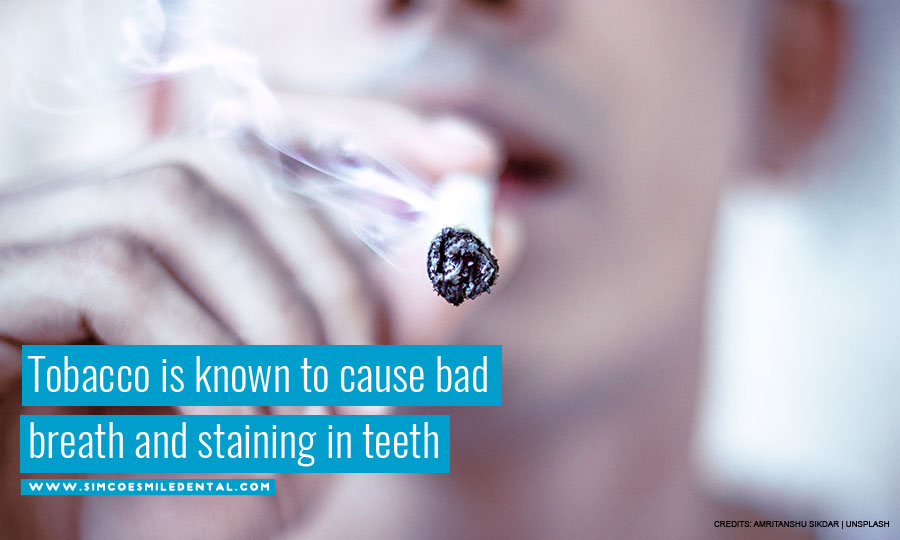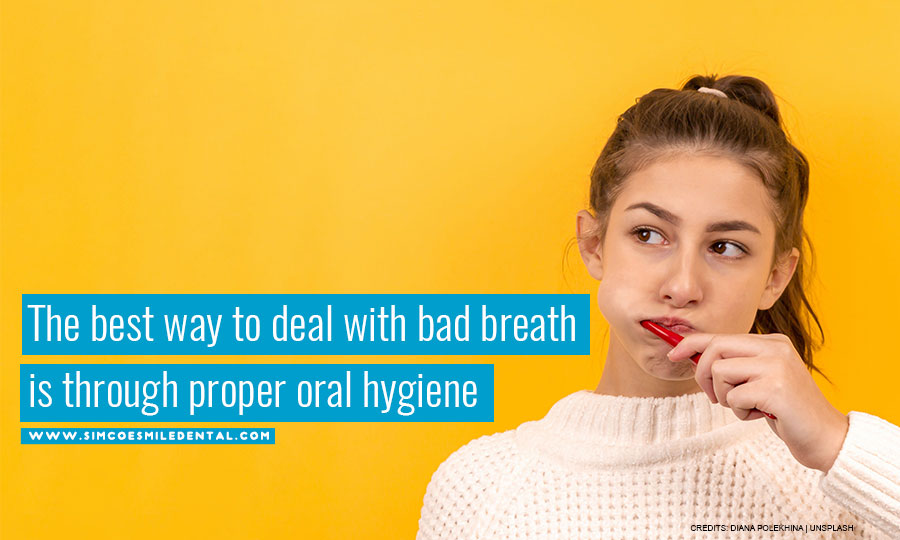Bad breath, or halitosis can be a source of embarrassment and anxiety for some people. It’s no wonder that gum, mints, mouthwashes, and other breath-freshening products are abundant on store shelves. Many of these products, however, are only temporary fixes because they do not address the root of the problem.
A range of foods, health conditions, and habits can all contribute to bad breath. In many cases, regular oral hygiene can aid in the elimination of bad breath. If self-care remedies don’t work, see your dentist or doctor to make sure your bad breath isn’t the result of something more serious.
What Is Halitosis?
Bad breath is the most prevalent symptom of halitosis, an oral health problem. Identifying the source of the problem is usually the first step in addressing bad breath.
As a result, halitosis is more of a symptom of an underlying issue than an oral disease in and of itself. Dentists are frequently consulted to diagnose halitosis. The patient’s medical history, as well as the odour of their mouth during a dental examination, is used to make the diagnosis. If the dentist can’t figure out what’s wrong they may recommend you to a specialist.
What Are the Common Causes of Bad Breath?
We’ve mentioned that halitosis is a byproduct of underlying causes. Here we list down a few of these causes and how you can deal with them.
Tonsil Stones
Tonsil stones are calcified pieces of bacteria lodged in the small pockets of a person’s tonsils, which can be unpleasant. These tonsil stones form as a result of dirt and plaque accumulating in the small pockets of the throat, which is frequently induced by food.
These calcifications are white and firm, with a diameter of barely a few millimetres. They are teeming with bacteria, which is why they frequently create bad breath.
Dentists recommend brushing properly and using mouthwash to help wash away particles. Patients can also use soft tools like a cotton swab to gently push formed stones out of the pockets if gargling mouthwash doesn’t help.
If home cures aren’t working, doctors can undertake a variety of operations to help seal the spaces in the tonsils and avoid infection.
Cavities
A cavity is a hole in the tooth caused by tooth decay. Cavities develop when acids in the mouth erode the enamel, the tooth’s hard outer layer.
Bacteria live on bits of food or sugars that may be left in the mouth after eating or drinking, forming acids that eat away at the surface of your teeth. The longer bacteria and acids remain on your mouth the higher your risk for tooth decay and cavities.
Cavities and the bacteria in your mouth can cause your breath to turn into bad breath. Additionally, aside from the debris and the development of bacteria, the decay in the tooth can also contribute to the development of bad breath.
Dry Mouth
Saliva aids in the cleaning of your mouth by eliminating food particles that cause bad breath. Bad breath is likely to follow when saliva production slows or ceases, a condition known as xerostomia.
This occurs naturally while you sleep, which is why most people’s breath is a little foul when they wake up. However, if the condition continues throughout the day, therapy may be necessary.
Dry mouth can also be caused by prescription medications. Dry mouth is an adverse effect of hundreds of prescription drugs. When your mouth is dry and your saliva production drops, microorganisms that cause bad breath thrive.
Cottonmouth can be uncomfortable and create poor breath if left untreated for an extended period of time. Additionally, when certain medications are broken down in the body, chemicals are released that can travel through your circulation and into your lungs.
Bad Habits (Smoking, Excessive Drinking)
Tobacco products—whether it’s cigarettes, chewing, or pipes—all cause bad breath and result in more serious dental health issues. In addition to making your mouth smell like an ashtray, tobacco can damage the gum tissue, leading to gum disease.
Alcohol consumption is another culprit of bad breath, the more often you drink, the more likely you are to experience it. Drinking alcohol, particularly in excess, causes a decrease in saliva production, which is the best environment for odour-causing bacteria to flourish.
Tobacco and excessive alcohol consumption can also cause other oral health issues such as exacerbating tooth decay and staining in your teeth. These will need further procedures such as teeth whitening.
What Are the Basic Steps to Deal With Bad Breath?
The best way to deal with cases of halitosis or bad breath is to maintain good oral health practices. Brushing regularly is your best option. It gets rid of food debris that may get stuck in the crevices of your mouth. Flossing is also important as it can help remove plaque in between your teeth.
If you’re looking for mouthwash, it can be quite confusing seeing all the varieties and brands available on the market. In truth, there is no one-stop-shop mouthwash variety. Different people with different conditions will require specific varieties. It would be best to visit your healthcare provider for proper guidance.
Additionally, bad breath that results from underlying causes can only be treated by dealing with the root cause. Your dental health provider can help advise you on the necessary steps you can take to help solve these underlying issues.
Consult the Professionals
This guide is a simple overview of the different causes of halitosis. If you think you are suffering from persistent bad breath or other oral health issues, consider talking to an oral healthcare professional. They can help educate you on your oral health problems as well as offer guidance on how you can better your health as well as your family’s.
Turn to Simcoe Smile Dental to speak to a dentist in Oshawa. You may call us at 289.312.1482.


